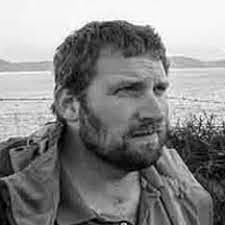Climate change and archaeology – investigations of the Copper Coast’s eroding promontory forts
Ireland's climate is changing with an increase in average annual rainfall, and intense storms and global sea level projected to increase resulting in increased coastal erosion and flooding causing damage to coastal archaeological sites. The EU-funded CHERISH Project is a cross-disciplinary team of specialists in Ireland and Wales developing field methodologies and toolkits to study climate change impacts on coastal cultural heritage. One of their study areas is Waterford’s Copper Coast, which has a rich heritage, including ogham stones, promontory forts, shipwrecks, and historic mining sites, at risk from coastal change.
The CHERISH Project has recently undertaken survey and excavation, using aerial archaeology, geophysics and coring, at some Waterford sites. Coastal promontory forts dating from the Iron Age to the early medieval period are frequently found along the Atlantic coast of Europe and the Irish Sea. Research into the forts is significant as they protrude into the sea making them an unmistakable part of the maritime landscape and of vital importance to passing seafarers for navigation. Conversely, their occupiers were able to observe the sea lanes, allowing them to monitor and to some extent control traffic, and to take defensive action if necessary.
On the Copper Coast they are located close to important agricultural, mining and wildfowling resources. In this lecture Dr Pollard will present data gathered at four of the remaining 32 promontory forts found along the Copper Coast. Analysis is identifying historic storm and flood deposits, samples for dating, and X-ray fluorescence for chemical composition. Estimates of erosion of the cliffs since the construction of the promontory forts over 1500 years ago suggest a rate of erosion of at least 4cm/yr varying on the rock type, structural features and historic mining activity. Many portions of forts have already been lost to erosion with further damage expected to increase due to climate change.
Edward Pollard is an archaeological researcher on the CHERISH Project based at The Discovery Programme: Centre for Archaeology and Innovation Ireland in Dublin. The CHERISH Project is EU funded also involving the Geological Survey of Ireland, Royal Commission on the Ancient and Historical Monuments of Wales, and University of Aberystwyth. Edward studied archaeology and geology at the University of Bristol followed by maritime archaeology at the University of Ulster. This was followed by a PhD on the maritime cultural landscape of the Swahili coast concentrating the World Heritage Site of Kilwa Kisiwani and Bagamoyo in Tanzania. He has also worked commercially as an archaeologist in Western Australia, Ireland and Orkney, and on research projects with the Underwater Archaeology Unit on the Irish shipwreck inventory, University of Stirling soil analysis app, Institut Français d’Archaéologie Orientale on medieval Cairo, Oman Maritime Heritage Project at Qalhat, and with the British Institute in Eastern Africa he worked on medieval urbanisation on Pemba Island, Tanzania; development of the Buganda kingdom around Lake Victoria, Uganda; irrigation systems in the Rift Valley; and rockshelters in Laikipia, Kenya. Prior to working on the CHERISH Project he was Assistant Director of the British Institute in Eastern Africa in Nairobi supporting research around Subsaharan Africa. His interests are in geoarchaeology and the development of ports in the past for sea travel and access to raw materials. The CHERISH Project assists this with the ancient Irish Sea communication to study along with the CHERISH partners based in Wales, and the environmental effects of climate change on the archaeological sites of the coast.



No comments:
Post a Comment